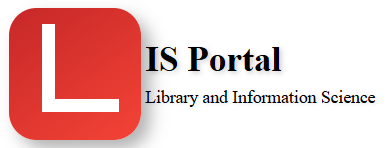Quiz: Ebooks
1. What does “ebook” stand for?
Answer: A) Electronic Book
Explanation: “Ebook” is a shortened form of “electronic book.”
2. What is a primary advantage of ebooks over printed books in terms of accessibility?
Answer: B) Adjustable font sizes
Explanation: Ebooks allow users to change font sizes, making them more accessible for people with visual impairments.
3. Which format is known for maintaining a fixed layout, similar to a printed page?
Answer: C) PDF
Explanation: PDF (Portable Document Format) preserves the original formatting of a document.
4. What was Michael S. Hart’s contribution to the world of ebooks?
Answer: B) Launching Project Gutenberg
Explanation: Hart founded Project Gutenberg, which aimed to digitize and distribute public domain books.
5. What technology is commonly used in e-readers to reduce eye strain?
Answer: C) E-ink displays
Explanation: E-ink technology mimics the appearance of ink on paper, making it more comfortable for reading.
6. Which decade saw the emergence of dedicated e-reader devices?
Answer: C) 1990s
Explanation: Devices like the Rocket eBook and the Sony Data Discman were released in the 1990s.
7. What is a common benefit of buying ebooks online?
Answer: A) Immediate availability
Explanation: Ebooks can be downloaded instantly after purchase.
8. What is a potential drawback of ebooks compared to physical books?
Answer: B) Dependence on electronic devices
Explanation: Ebooks require a device with a charged battery to be read.
9. Which company is known for its Kindle e-reader?
Answer: C) Amazon
Explanation: Amazon’s Kindle is one of the most popular e-reader devices.
10. What is the name of the open ebook format that is widely used today?
Answer: C) EPUB
Explanation: EPUB is a widely adopted open standard for ebooks.
11. What is Project Gutenberg’s primary focus?
Answer: B) Digitizing and distributing public domain books
Explanation: Project Gutenberg offers a large collection of free ebooks whose copyrights have expired.
12. Which of these is NOT a typical feature of an e-reader?
Answer: C) Color display for most models
Explanation: Most dedicated e-readers use e-ink technology, which is primarily black and white.
13. What is a “digital library”?
Answer: B) A collection of ebooks accessible online
Explanation: Digital libraries like Project Gutenberg offer access to a large number of ebooks.
14. What is a major concern for authors and publishers regarding ebooks?
Answer: B) Copyright infringement
Explanation: Illegal sharing of ebooks is a concern for copyright holders.
15. What is the benefit of reflowable text in ebooks?
Answer: B) It adjusts to different screen sizes
Explanation: Reflowable text adapts to the screen size of the reading device.
16. Which of the following is NOT a common file extension for ebooks?
Answer: D) .exe
Explanation: .exe is an executable file, typically for software installation.
17. What is a benefit of ebooks for students?
Answer: B) They can be easily searched for specific information
Explanation: The search function in ebooks makes it easy to find specific terms and passages.
18. In what decade did ebook sales begin to significantly rise?
Answer: D) 2010s
Explanation: The 2010s saw a significant increase in ebook adoption and sales.
19. What is a key difference between an e-reader and a tablet?
Answer: B) E-readers are primarily designed for reading
Explanation: While tablets can read ebooks, e-readers are optimized for a comfortable reading experience.
20. What is a benefit of ebooks regarding storage space?
Answer: C) They can store many books in a small digital space
Explanation: Ebooks allow users to carry a vast library on a single device.
